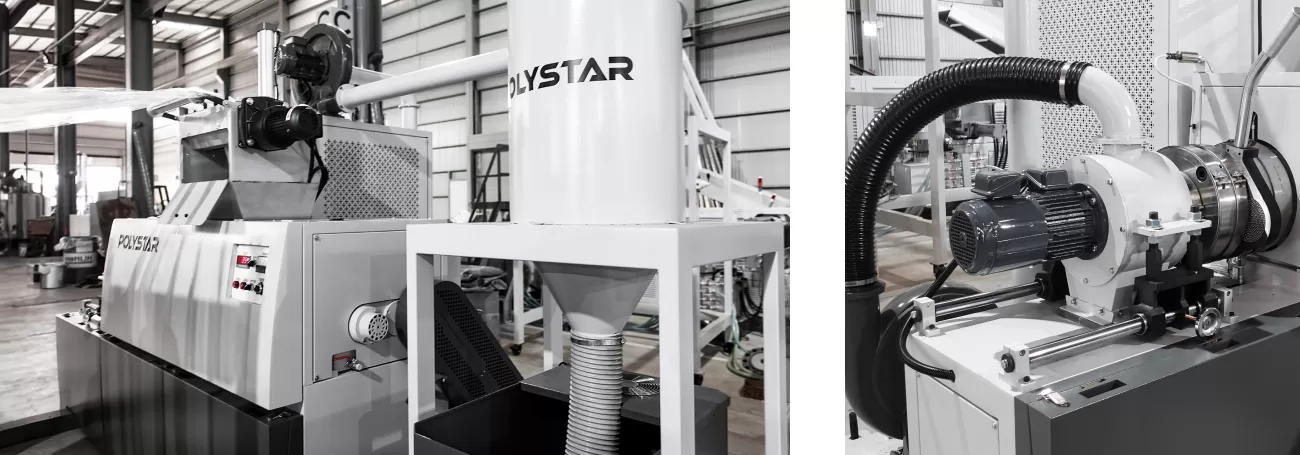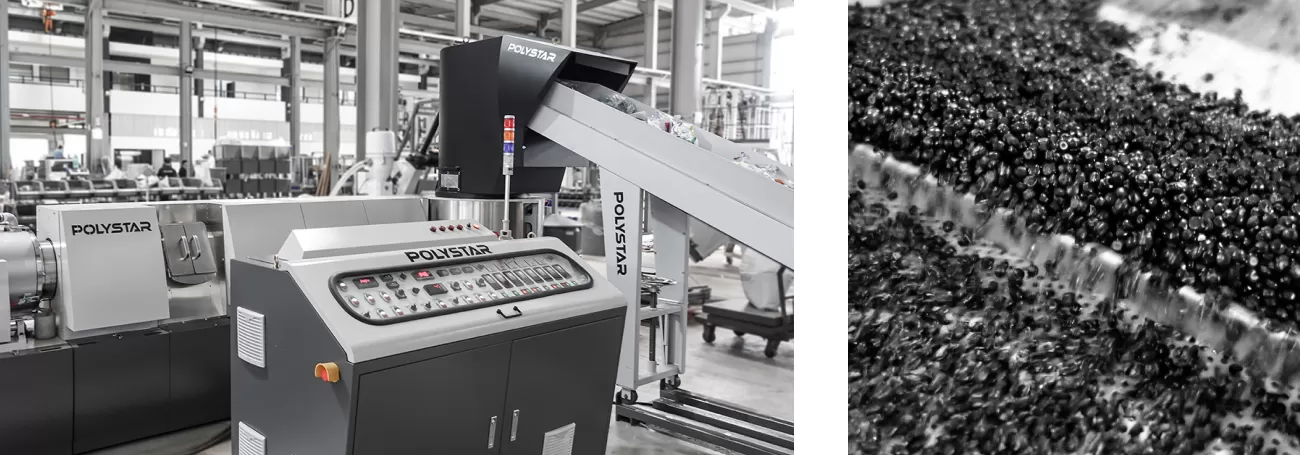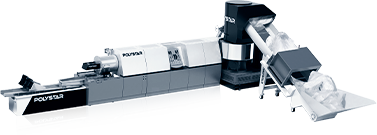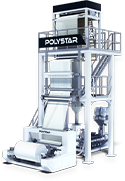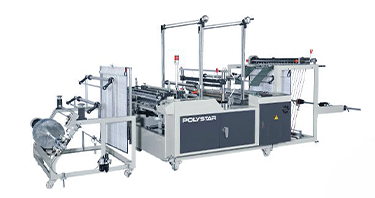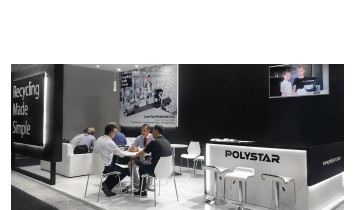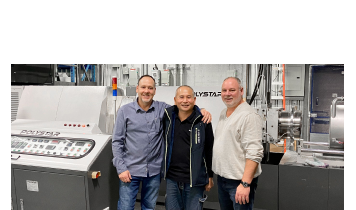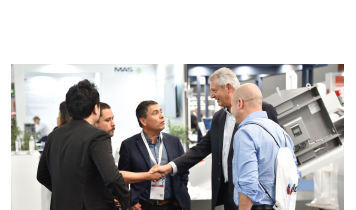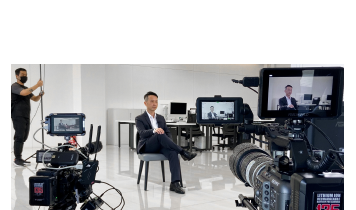We use cookies and other tracking technologies to improve your browsing experience on our website, By clicking "Accept All," you agree to allow cookies to be placed to enhance your browsing experience on this website to show you personalized content and targeted ads, to analyze our website traffic, and to understand where our visitors are coming from. You can manage your cookie settings below. Clicking "Confirm" indicates your agreement to adopt the current settings.
Which Recycling Machine is Best for Your In-house Plastic Film Recycling?
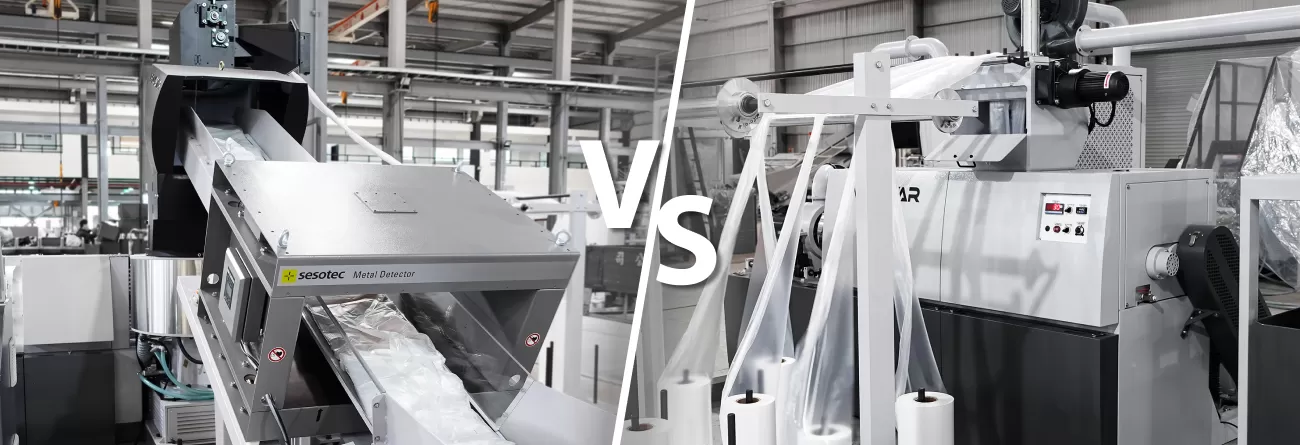
In-house plastic film is usually clean and can be reprocessed right away without extra procedures. But what kind of recycling equipment you should invest in to make the best use of it?
For in-house plastic film recycling, POLYSTAR has two recommended solutions, Repro-Flex and Repro-Air. One of the similarities shared is that both recycling models are able to process HDPE, LDPE, and LLDPE clean post-industrial plastics like film, bags, T-shirt bag cut-offs, and edge-trim waste. However, Repro-Flex can deal with more kinds of plastics such as PP, PS, PA, etc. Let’s take a closer look at what they feature and their advantages, which are the main differences between them.
1. Air-cooled Plastic Recycling Machine
Advantages of Air-cooled Plastic Pelletizer:
-
Compact design
Compactness is one of the best features of Repro-Air which enables it to be placed right next to blow film or bag-making lines for immediate recycling. Moreover, with its simple structure, Repro-Air is suitable for beginners who have limited budgets and resources.. -
Direct feeding
HDPE, LDPE, and LLDPE film scraps, bags, and cut-offs can be fed manually by the operators through the feeding window. The plastic waste will directly enter the extruder. For film-on-roll recycling, most of the film producers install a nip roller to improve efficiency and productivity. -
Water-free Pelletization
The operation of Repro-Air does not require any water as it applies air-cooling systems. The output pellets coming from the hot die face pelletizing are 100% dry; therefore, it can reach a higher percentage of reusability and the pellets can be back into the production line immediately.
2. Water-cooled Plastic Recycling Machine
Advantages of Water-cooled Plastic Pelletizer:
-
Built-in cutter compactor
With this feature, plastic waste is crushed and preheated after being fed into the recycling machine. It eliminates the need of an extra crusher. The cutter compactor directly and constantly feeds the material into the extruder, ensuring a fast and stable feeding. -
Effective degassing and filtration systems
To obtain higher-quality final pellets, the degassing system is crucial in removing ink and extra moisture, while the filtration system helps filter out the impurities. The process is particularly important when dealing with printed and slightly contaminated waste.
Repro-Flex provides a range of degassing unit options and a dual piston filtration system for the different requirements of plastic manufacturers.
-
Bigger capacity
With the bigger amount of plastic waste that can be processed as well as the high-speed hot die face pelletizing (water-ring pelletizing), Repro-Flex is efficient with the maximal capacity which reaches 1,200 kg/hr, fast turning your plastic waste into valuable resources and achieving ROI (return on investment).
Conclusion
Repro-Air is more than sufficient for plastic film or bag producers who have limited resources, a lower capacity requirement (45~50 kg/hr), and specifically recycling in-house soft plastic.
Repro-Flex, on the other hand, is suitable if there is a bigger amount of plastic waste to be recycled or a possibility of expanding waste diversity, which would require the need for cutting and degassing.
Before making decisions, make sure you take everything into account, including what types of plastic will be reprocessed, how tight your budget is, and how much space your factory has. Once you have your ideal model in mind, Contact us.
About the Author
Janine Cheng
Marketing AssistantJanine creates engaging content for POLYSTAR’s social media presence, including keeping social media channels updated and brand-focused and seeking ways of connecting with plastic producers and recyclers.

